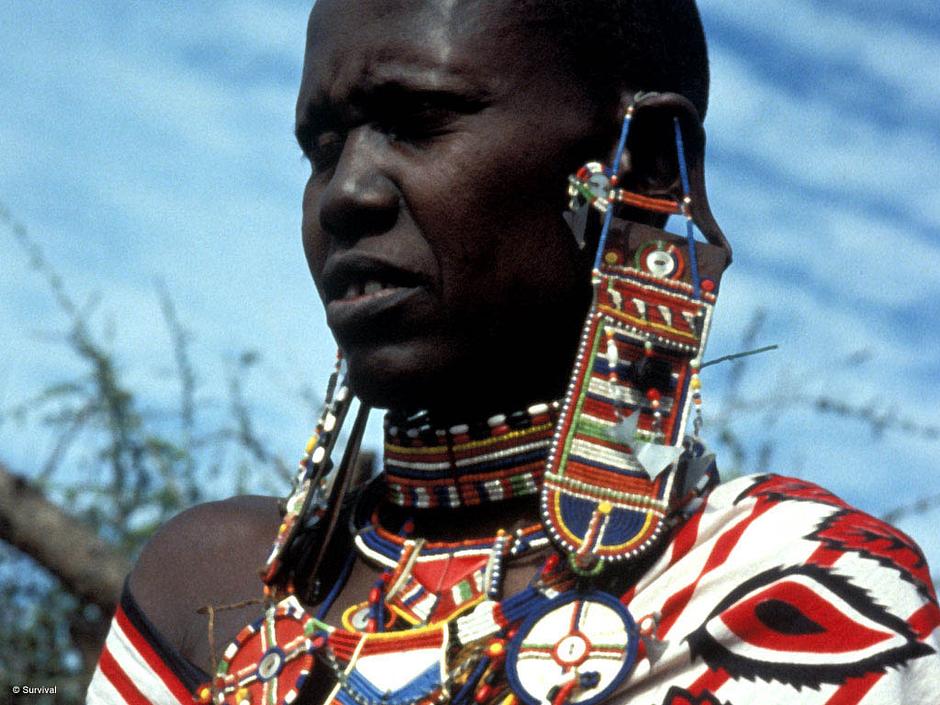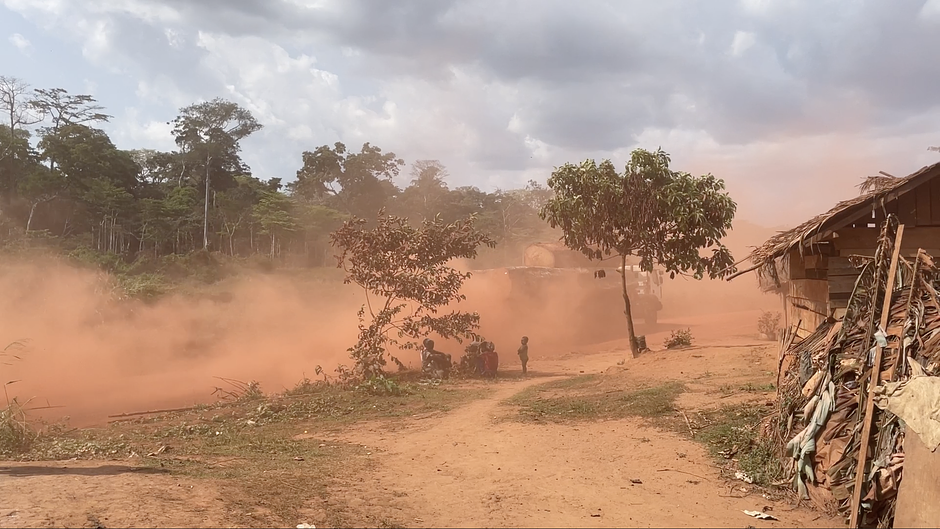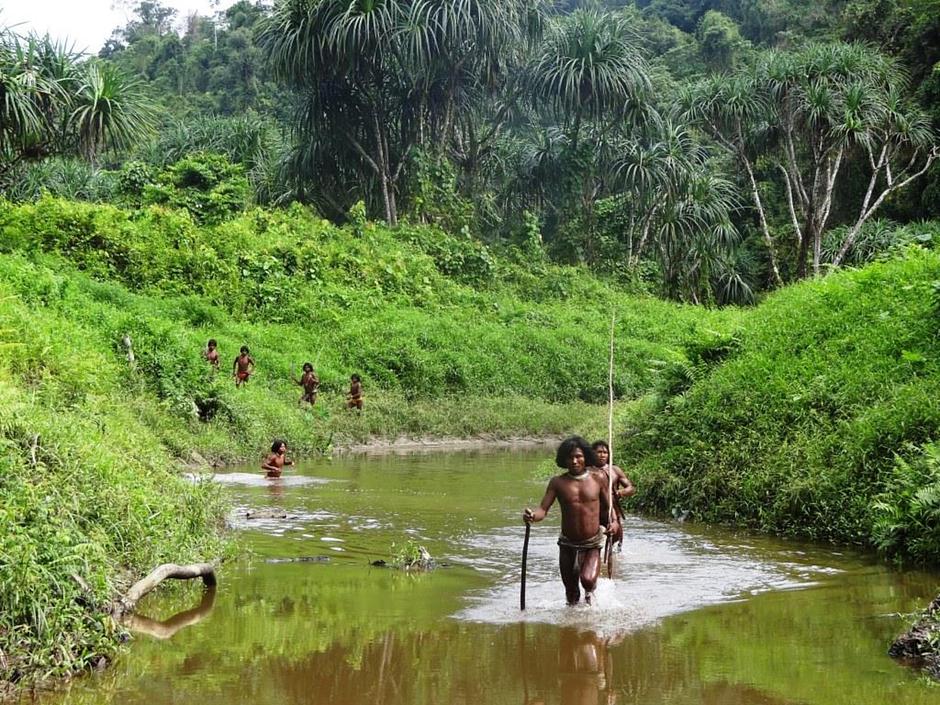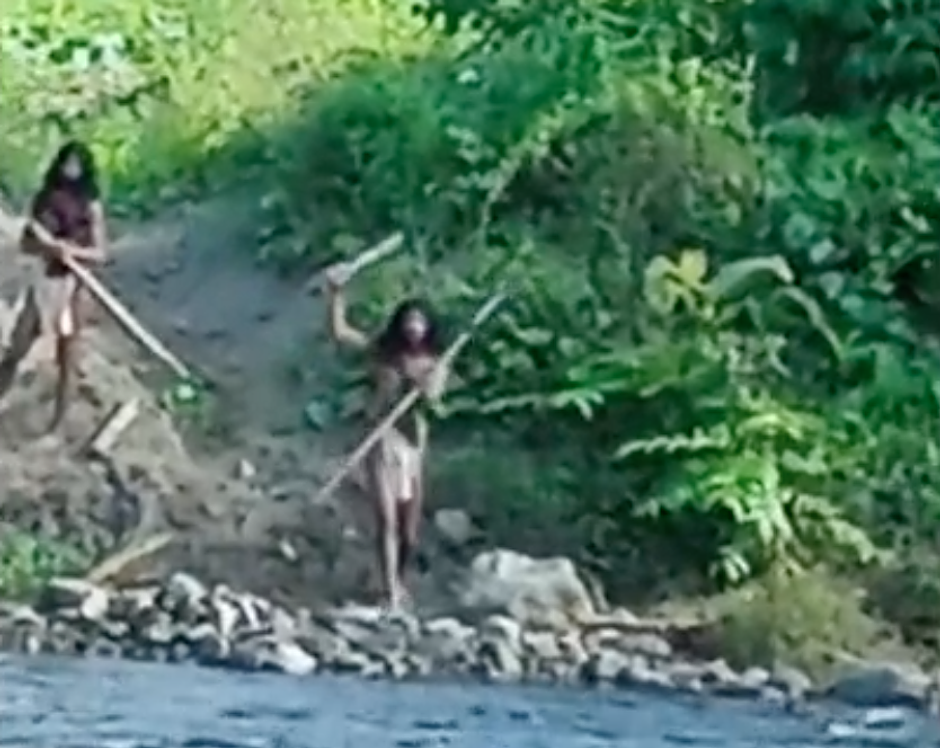The Elephant in the Room: Why Conservation Must Include Indigenous Knowledge

Since human beings are elephants’ only serious predator, the creatures must be controlled if the herds are to remain healthy, however unsavory that may sound to animal lovers and however much the public face of conservation hides it. An elephant consumes about 350 pounds of vegetation daily (the average American human takes over two and a half years to eat that weight in potatoes). Like many other plant-eaters, if left unchecked elephants will destroy their own environment. They kill the trees, especially the larger and older canopy cover on which many other species depend.
When tribal hunters, like the Waliangulu, and others (pejoratively) known as “Dorobo,” an ethnic categorization that comprises several hunting and gathering groups in the East Africa region, were thrown out and largely eradicated by European colonists stealing their land for game parks in East Africa, savannah elephant numbers grew rapidly to the point where they began destroying the ecosystem. Massive culls had to be arranged by conservationists – and kept quiet from their donors.
Liquid error: internal
In one park in South Africa, for example, nearly 600 elephants on average were culled every year from 1967 to 1996. In eastern Kenya, a few hundred tribal hunters had kept the huge herds largely in check, killing perhaps up to 1,500 elephants annually, but after they were banned, subjected to a war on “poaching” and other restraints designed to promote tourism, the herds grew to the point where tens of thousands died of starvation when drought periods arrived.
Conservationists are now divided between those who think other methods, such as contraception, should replace culling and those who believe killing remains the only practical solution. What is certain is that there are some areas in Africa today where there are too many elephants for the environment to support. This is in spite of the effects of real poaching which has brought forest (though not savannah) elephants to critically low numbers.
African elephant poaching in general– as professional conservationists well know – is largely facilitated by money-grabbing officials, who remain untouched by the current militarization and extreme violence of “fortress conservation.” More than fifty years of public harangues for money to stop the magnificent creature’s supposed “extinction” continue to divert attention away from the real criminals.
The supposed imminent extinction of elephants has been predicted for over a century. According to Somerville, in 1908 the head of the Kenyan Game Department warned of it, and in 1935, Major Hingston of the Fauna Preservation Society called for special measures to save elephants “from extinction.”More recently, a 2008 report claims “most large groups could be extinct by 2020.”
The popular, but deeply flawed, Kathryn Bigelow cartoon, “Last Days of Ivory,” and several other reports, puts extinction year at 2025 and the film, “The Ivory Game,” makes a pitch for 2031. Extinction would of course be a great crime and tragedy if it ever happened, but the Kenyan conservationist, Mordecai Ogada, challenges, rather scathingly, “Who’s willing to bet with me that there’ll be elephants in 2025?” Big conservation organizations seem to keep the date for supposed elephant extinction always about 10-20 years ahead of their respective fundraising campaign. Patrick Marnham says the U.S. government was preparing to declare elephants an endangered species at the same time in 1978 when elephant meat, from organized culls, was widely and openly on sale in Tanzania.
Liquid error: internal
Aside from humans, there are in fact few creatures which have a bigger environmental impact than elephants which, without controls, double their numbers on average every ten or eleven years. One might speculate how tourists in the Chobe National Park in Botswana, for example, would react on learning that the vast elephant herds they were paying equally vast sums to see were actually environmental wreckers, destroying the “Wild Africa” Western myth. They are now reckoned to number no less than seven times the land’s capacity.
Liquid error: internal
Tribal elephant hunters, like the Baka “Pygmies” in the Congo Basin, are not only good for biodiversity, they were once vital for the health of elephants and they could still be key in stopping their poaching by outsiders. Tribal hunting more widely is internally controlled, largely through the idea that spiritual or physical retribution will fall on any who transgress accepted etiquette. The unwritten rules often include: accepting some delicate zones, such as river headwaters, to be strictly off-limits; not killing female or young animals, or during mating seasons; not hunting near water holes which would frighten animals into not drinking; not killing when game numbers are depleted; and, broadly and simply, not taking more than is needed.
It is not only tribal hunters who bring a positive environmental impact. The United Nations Environment Program calls Maasai pastoralists “low-cost guardians,” and reports that their eviction – by conservationists – from the Ngorongoro Conservation Area in Tanzania led to “an increase of poaching and the subsequent near extinction of the rhinoceros population.”
Liquid error: internal
Although it seems obvious to many that tribal peoples are the best conservationists, when I was a youthful volunteer for tribal peoples’ rights and was passing on Robert Goodland’s warnings about climate change, I was careful to downplay this notion. The slightest nod in that direction would be met by jeers and sneers, not only from environmentalists but also from some anthropologists who I assumed knew more than it turned out they did. “Noble savage!” and “Rousseau!” would be disdainfully disgorged, intended as insults which were supposed to end all debate, “Give the Indians chainsaws and they’ll cut the forest down as fast as anyone!”
That was two generations ago, and time has proved how wrong they were. Satellite imagery of the Amazon now reveals, beyond any doubt, that the forest remains largely intact where Indigenous people retain control. In fact, the most biodiverse areas on Earth are Indigenous territories, and it’s reckoned that today they incorporate an astonishing eighty per cent of all floral and faunal diversity on the planet. SomeAmazon Indians do have chainsaws and could have felled everything, as those anthropologists used to howl (and big conservation organizations still do – at the same time as they partner with logging companies!), and some Indian peoples do sell their timber. But they certainly didn’t destroy the forest, as predicted: In fact, if you now take an aerial picture of Amazonia and draw a line around the areas of visibly intact forest, you’ll likely be tracing the exact outlines of Indigenous peoples’ territories.
Liquid error: internal
That is confirmed by the data newly available through satellite and GPS technology: Deforestation on land managed by agribusiness, around the Pimental Barbosa Indigenous Reserve in Brazil for example, leapt from 1.5 per cent in 2000 to twenty six per cent ten years later. In the same period, deforestation inside the reserve, managed by the Xavante Indians,was reduced from 1.9 to 0.6 per cent. Similar figures can be seen throughout the region, where deforestation outside Indigenous areas is up to twenty times higher than inside. Areas managed by Indigenous people in the Amazon have even lower deforestation rates than protected areas such as national parks.
We find the same story elsewhere. Tribal peoples in India hold particular forest areas especially sacred; they are now recognized by scientists as “biodiversity hotspots.” The Loita hills and forests in Kenya remain largely intact because the local Maasai council of elders banned tree felling without its explicit permission. The Karura forest, well inside the city of Nairobi, also owes its preservation originally to the traditional owners, and a belief in the curses they placed on anyone who might allow in settlers.
Data comparing dozens of state contrasted against Indigenous-owned forests over three continents found unequivocally that communities really do protect their lands and preserve forests, even if that means taking less for their own livelihoods. Of course, it’s also important they have confidence in the future security of their land rights.
Impressive and moving stories are growing about how Indigenous communities are making their own new rules for conserving their lands and then policing them, imposing fines, arresting loggers, and even stopping government departments from imposing their irresponsibly harmful policies.
This is happening from Brazil, where it is exemplified by the “Guajajara Guardians” protecting the lands of Awá Indians, to India. In the latter country, home to more tribal people than any other nation, government policy calls for more teak and eucalyptus plantations, and cynically trumpets this as increasing “green cover.” But these trees don’t provide forage for elephants, which are forced to look for food in villagers’ fields, and inevitably turn dangerous. Community run projects are retaliating by establishing forest corridors both to reinforce tribal self-sufficiency and to provide elephant habitat. Time and again, governments and their advisors prove inept at conservation when local people have long known what actually works, but are often forbidden from doing it.
It is not just in forests and savannahs where Indigenous peoples can lay convincing claim to being the best conservationists. The Lax Kw’alaams people on Canada’s Pacific coast turned down the equivalent of over a quarter of a million U.S. dollars for every man, woman and child when they refused to allow a gas terminal on their land. As artist Lianna Spence said, “We already have a lot of benefits around us – we have… salmon. We have halibut, crab and eulachon. Those are our benefits.”
*
Around the world –though only where they are politically strong and numerous enough –Indigenous peoples are now blocking proposed “development” sites and tourist roads, rejecting financial compensation, filing legal complaints, and fighting to stop the environments they depend on – which, remember, they have created themselves –from being torn from their stewardship. Their role in the vanguard of true conservation is slowly beginning to be acknowledged. Unfortunately, this is almost always with little more than hot air – grand declarations not reflected in action. Worse, it remains the norm for conservation projects to encourage the eviction of Indigenous peoples from their ancestral lands, which usually destroys them. The major conservation organizations remain guilty of this illegal and counterproductive measure, notwithstanding their public relations departments’ pretense that they changed years ago.
Vithal Rajan, an Indian former head of the World Wildlife Fund’s “ethics department” told me that he left the job (which paid more in a year than he had previously earned in ten) because WWF promised him they would start treating tribal peoples as environmental guardians, “but then went on with their élite strategies.” He described his role as a “brown man who could talk English, wear a dinner jacket, stand with Prince Philip, and be nice while the audience of multimillionaires wrote cheques.”
The truth is that Indigenous peoples were practicing sensible and balanced resource management long before the invasion and takeover of their territories, and long before the colonial conservation organizations appeared, convinced that only they knew best.
In summary, tribal peoples managed their environment: by undergrowth burning; by changing and moving plants and animals; by opening clearings; and by controlled hunting and fishing. The result was an environment heavily modified to create a better space for people to live their lives, and one that brought a vastly enhanced biodiversity.
The opposing idea, still believed by many, that the most intelligent animal on our planet for several million years had only a nominal impact on the environment, is actually very strange if you think about it. It turns out to be just a romantic, and recent, Western belief. It gained traction in the nineteenth century, influenced by Romanticism, scientific racism, and the aspect of Reformation theology that emphasizes a separation between corrupt humankind and God’s supposedly untrammeled Nature.
The Industrial Revolution, beginning in Europe and spread through conquest, of course changed the planet in new and alarming ways. Amassing more and more things and power were its tenets; the provincial dogma that everything must become uniform and simplified, that there was only one correct way of looking at the world, was trumpeted with a ferocity that has endured, and it remains the prevailing faith today.
In spite of waves of doubt, including both the hippy and green movements, it’s the belief that now governs many Westerners, especially those with power and privilege. It also motivates non-Westerners who are, perfectly understandably, taught to aspire to the same way of life, though only a tiny number will ever be allowed to approach, let alone attain, it.
Where does this leave the “noble savage” jeer, flung at those who support tribal peoples? The truth is that we can now unequivocally declare Rousseau’s allegory to be both right and wrong! Tribal peoples don’t just live “in nature,” or, if they do, it’s a nature that they themselves have created. On the other hand, they do live in a way that is broadly and sensibly balanced with an environment that they depend on for their livelihoods, and they really do make the best conservationists. They are not all perfect, but they certainly do a far better job of it than the bloated, big, colonial conservation organizations, which are usually deeply embedded in a wider government-industrial complex serving primarily itself and rich tourists.
Some conservationists blame humans for some prehistoric megafauna extinction, in spite of the overwhelming evidence that people lived alongside big animals for thousands of years, and still do in some places. (A recent theory from Madagascar is that – paradoxically – it was not hunting societies but farmers who brought about the end of the megafauna there.) Other conservationists defend their elitism by admitting that tribal peoples might have once been good conservationists, but claim the original balance between tribes and nature has been irredeemably upset since Indigenous people have become “tainted,” seduced by consumerism and are now “just as bad as the rest of us.”
In some places this may ring true. However, if we stick to known facts, and most importantly if we really do value biodiversity, then the evidence is clear that we have to stop alienating contemporary tribal peoples by throwing them off their land. It harms wildlife protection because it turns them into enemies of conservation and means we can never learn from their environmental knowledge and expertise. For their sake, for that of the environment, and indeed for all humanity, we have to start valuing them as the best experts. We need to start realizing that we’re no more than junior partners in this vital quest to save “nature” from ourselves.
*
There’s nothing “romantic” about this, it’s common sense supported by myriad, growing, and provable facts. If we accept it, it could lead industrialized society towards new and better relationships between the vast diversity of peoples, animals and plants of our planet – and their very deep interconnectedness about which our knowledge remains scanty and shallow. It would be a gamechanger for all our futures.
That obviously means shifting our attitudes and revising the know-it-all mentality that the West has become addicted to over recent generations. However, it does not imply a complete abandonment of industrialization, or any requirement that “we” live like we once did. A few may think these desirable goals, but they simply won’t come about to any significant extent – which is fortunate because if they did they would harm millions. So, incidentally, would the dream of those like E.O. Wilson who wants to put half the world off limits to everyone but conservationists –thankfully, there’s little chance of that nightmare ever happening either (though they’re having a good go at imposing it on Africa).
Perhaps it would also be helpful if conservationists stopped complaining about “overpopulation” –all too often meaning there are too many black and brown people. Women’s empowerment and access to contraception are vital and must be supported, but the fact is that the population density in Africa remains low. South of the Sahara it’s just ten per cent that of England, and less than half that of the United States. It takes about forty Africans to consume the same as a single American. Environmentalists wanting to reduce the population to ease the pressure on resources might find it most efficient to focus first on wealthy Americans and Europeans (and remain childless themselves of course!).
Nostalgia might be hard to shake off, but it’s not a useful recipe for living tomorrow. At the same time, the current drive to consume more and more should be recognized for what it is, an unhinged gateway which leads inexorably towards a real wilderness, one so barren and hostile that only the most powerful are likely to have much chance living in it.
That may suit some of them just fine, but whether or not they are allowed to get away with it may well end up being a question of how much fight there is in the rest of us.
April 25 2019






